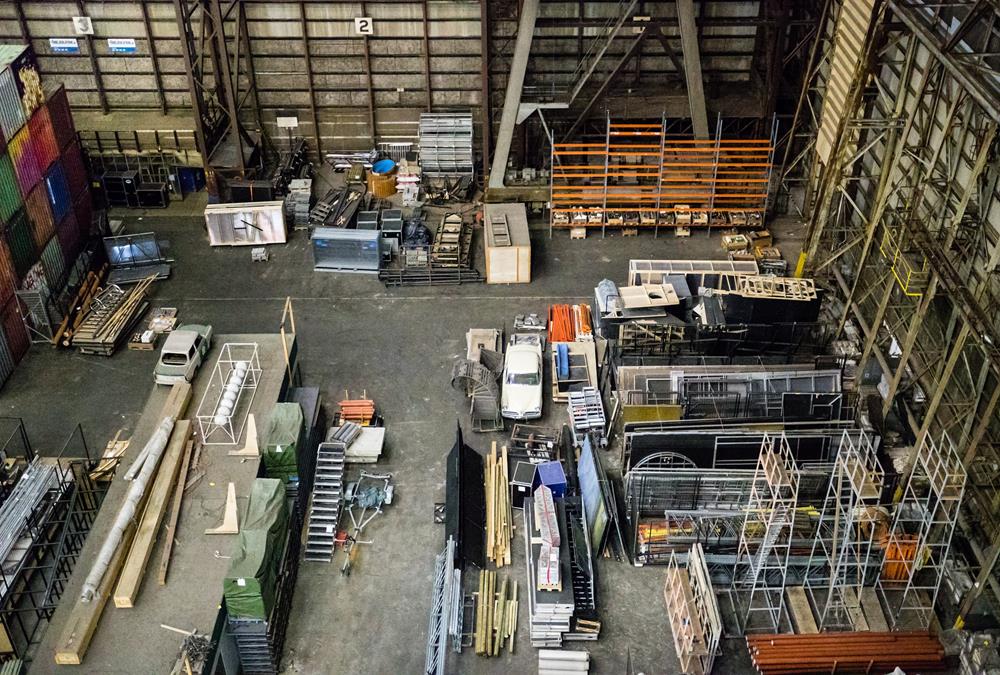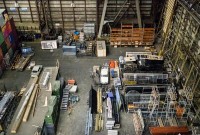- Home
- Business Processes
- Industry Knowledge
- Aerospace Industry
- Automotive Industry
- Banking Domain
- BFSI Industry
- Consumer/ FMCG Industry
- Chemicals Industry
- Engineering & Construction
- Energy Industry
- Education Domain
- Finance Domain
- Hospitality Domain
- Healthcare Industry
- Insurance Domain
- Retail Industry
- Travel and Tourism Domain
- Telecom Industry
- Leadership Skills
- eLearning
- Home
- Functional
- Procure to Pay
- Warehouse Layouts
Warehouse Layouts
One of the most important decisions when running a warehouse is its layout. Warehouse layout defines the physical arrangement of storage racks, loading and unloading areas, equipment and other facility areas in the warehouse. A good layout aligned with the business needs could have a significant effect on the efficiency.
One of the most important decisions when running a warehouse is its layout. Warehouse layout defines the physical arrangement of storage racks, loading and unloading areas, equipment and other facility areas in the warehouse. A good layout aligned with the business needs could have a significant effect on the efficiency of operations. Today’s business climate is competitive, which is why it is so important for business owners to make their warehouse planning and implementation as efficient as possible to drive growth and profits. Layout decisions are important as they require substantial investments of both money and effort. Layouts are long term commitments that have significant impact on the cost and efficiency of short-term operations .
Compliance regulations regarding layout is also a major parameter as it controls the effective utilization and operational efficiency of the storage facility. Based on the requirements, locations are kept away or near the demand centers.
Objectives to keep in mind while designing your warehouse layouts:
- Optimum utilization and accessibility of storage space
- Maximize available storage and adjust for future growth
- Achieve business objectives at minimum operating expenses
Before you start the design of the warehouse layout, look at your stock and inventory needs. You should plan and define your warehouse layout to meet changing needs including predicting the amount of stock you will need, as well as where you would like to store your inventory. Your warehouse layout should encompass all the different factors that create an ideal warehouse or distribution center, so that you can achieve optimal warehouse efficiency.
Factors for Warehouse Layout Design
Given below are some important points to consider while defining the layout for your warehouse:
- Layout should consider the physical requirements of your warehouse as well as the tasks, milestones, staffing, estimated hours, budget, and deadline.
- Consider how items will be stored and picked
- Establish high-priority and low-priority storages areas for optimum placement of goods.
- Divide your warehouse into zones to accommodate various storage needs, such as temperature requirements, or various turnover rates for items.
- Organize your items either based on material handling and storage traits, or by SKU and product description.
- Group locations by using physical capacity constraint settings.
- Estimate your inventory needs and consider the seasonality and demand of products
- Specify warehouse locations based on business needs (for example, site, warehouse, aisle, rack, shelf, or bin position).
Related Links
You May Also Like
-
One of the warehousing best practices that retailers like Walmart, Amazon, and Target have adopted is known as cross-docking. During this process the inbound products are unloaded at a distribution center and then sorted by destination, and eventually reloaded onto outbound trucks. In real parlance, the goods are not at all warehoused but just moved across the dock (hence the name).
-
At a high level, the essential elements in a warehouse are an arrival bay, a storage area, a departure bay, a material handling system and an information management system. As part of the process for enabling a warehouse layout, you must define warehouse zone groups, and zones, location types, and locations.
-
Types of Inventory Count Processes
While dealing with lots of inventory in a warehouse, lots of things can go wrong. Shipments may not have the right number of units in them, or they could get damaged somewhere along the supply chain. Discrepancies in the stock may arise as part of every inventory control, and need to be corrected immediately after the inventory control procedure has been finished.
-
Overview of Warehouse Processes
The basic function of a warehouse is to store goods. This means that they receive deliveries from suppliers, do any necessary checking and sorting, store the materials until it is dispatched to customers. Traditionally warehouses were seen as places for the long-term storage of goods. Now organizations want to optimize their customer experience and try to move materials quickly through the supply chain, so the role of warehousing has changed.
-
Overview of Third-Party Logistics
Third-party logistics (abbreviated as 3PL, or TPL) is an organization's use of third-party businesses to outsource elements of its distribution, warehousing, and fulfillment services. A third-party logistics provider (3PL) is an asset-based or non-asset based company that manages one or more logistics processes or operations (typically, transportation or warehousing) for another company.
-
Types of Order Picking Methods in the Warehouse
There are many different types of picking in a warehouse and each one works as a customized solution for each business. Depending on the size of your warehouse and inventory, the manpower you have on hand, and the number of customer orders made each day, there may be certain methods that are more efficient for you than others.
-
Before shipping, businesses need to make sure that the items will arrive in good condition. Packaging is a form of protection against environmental threats that the product will face from the time it leaves warehouse facility until the time it reached the customer. The packaging is intended to provide protection for the item as it is being handled in the warehouse or when the item is being shipped.
-
What is a Warehouse & why companies need them?
All organizations hold stocks. In virtually every supply chain, gaps exist between when something is produced and when a customer is ready to buy or receive it. Stocks occur at any point in the supply chain where the flow of materials is interrupted. This implies that products need to be stored during this period of gap.
-
One of the most important decisions when running a warehouse is its layout. Warehouse layout defines the physical arrangement of storage racks, loading and unloading areas, equipment and other facility areas in the warehouse. A good layout aligned with the business needs could have a significant effect on the efficiency.
-
Warehouse management and distribution logistics involve the physical warehouse where products are stored, as well as the receipt and movement of goods takes place. Warehouse management aims to control the storage and movement of products and materials within a warehouse. These operations include the receipting of inwards goods, tracking, stacking and stock movement through the warehouse.
Explore Our Free Training Articles or
Sign Up to Start With Our eLearning Courses

About Us
Learning
© 2023 TechnoFunc, All Rights Reserved










